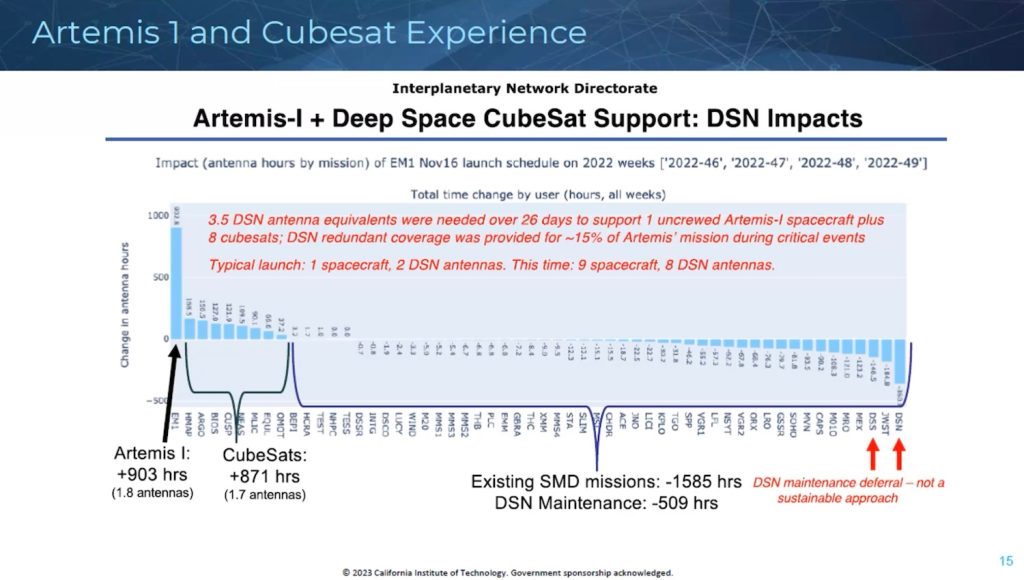
Between the increasing need and decreasing budgets, NASA’s Deep Space Network is running into constraints during big missions like Artemis 1. DSN’s director is concerned the lack of funding to expand deep space communications and the continued requirement to drop everything for these missions will harm NASA’s other science missions.
All hands on deck at DSN during Artemis 1
NASA’s Deep Space Network comprises of arrays of antennas across the globe, located in California, Spain, and Australia. These antennas connect NASA with its various science missions that operate outside of Earth’s orbit, many orbiting the Moon and beyond. This means it was used for the Artemis 1 mission to communicate with the Orion spacecraft and all of the various cubesats that flew along side it.
When NASA performs these high profile mission like Artemis, its an all hands on deck moment for the entire agency. Whether its launch operations at Kennedy, mission control at Johnson, or DSN communication at Cal-tech’s Jet Propulsion Laboratory, all of them work hard to make the mission successful.
This also means other science missions make sacrifices of resources to ensure Artemis 1 has what it needs. This includes time using the DSN. According to Suzanne Dodd, Director of the Interplanetary Network Directorate at JPL, Artemis 1 used 1,774 hours of DSN time. This includes all the time needed during the first launch window to support a potential launch and then everything from launch to landing. Other mission that normally use DSN gave up 1,585 hours of time.
That time was split roughly in half between Orion and the ten cubesats that were deployed from the stage adaptor segment of the SLS rocket. All of these mission where given the highest priority to DSN assets, meaning missions like the James Webb Space Telescope or the Perseverance rover on Mars had to give up time to sometimes lost cubesats attempting to contact home.

If you don’t remember, Artemis 1’s secondary cubesat missions were not 100% successful. With the delays in their launch since their installation many of their batteries were depleted before they even had a chance to get to space. Meaning the DSN had to allocate a lot of time, 871 hours, just to search for these spacecraft. “I’m not sure who thought it was a good idea” Dodd said when referring to the number of Cubesats during an meeting with NASA Advisory Council’s science committee. “I don’t think that’s a good use when your DSN is oversubscribed.”
DSN time is in high demand with little relief in sight
We’re living in a time where there are more interplanetary missions than ever by NASA. In the coming decades there plans to be way more that will require DSN to communicate with Earth. Sadly, DSN hasn’t gotten any budget increases to upgrade or expand its global network for future missions. In fact, DSN has gotten its budget decreased over the years due to Congress’s want to reduce spending.
NASA does plan to increase some capacity through the Lunar Exploration Ground Sites or LEGS program which would add six 18-meter antennas to the network. However, this isn’t expected to be operational until 2027. By that time DSN could be in charge of handling communications from not just Orion spacecraft but also SpaceX and Blue Origin lunar landers, NASA’s Gateway lunar space station, and countless commercial and other government landers on the lunar surface.
Every year we seem to gain a handful of new amazing new science missions to explore deeper into the universe. However, we tend to forget about the infrastructure that is needed to make those missions a success.
FTC: We use income earning auto affiliate links. More.




Comments